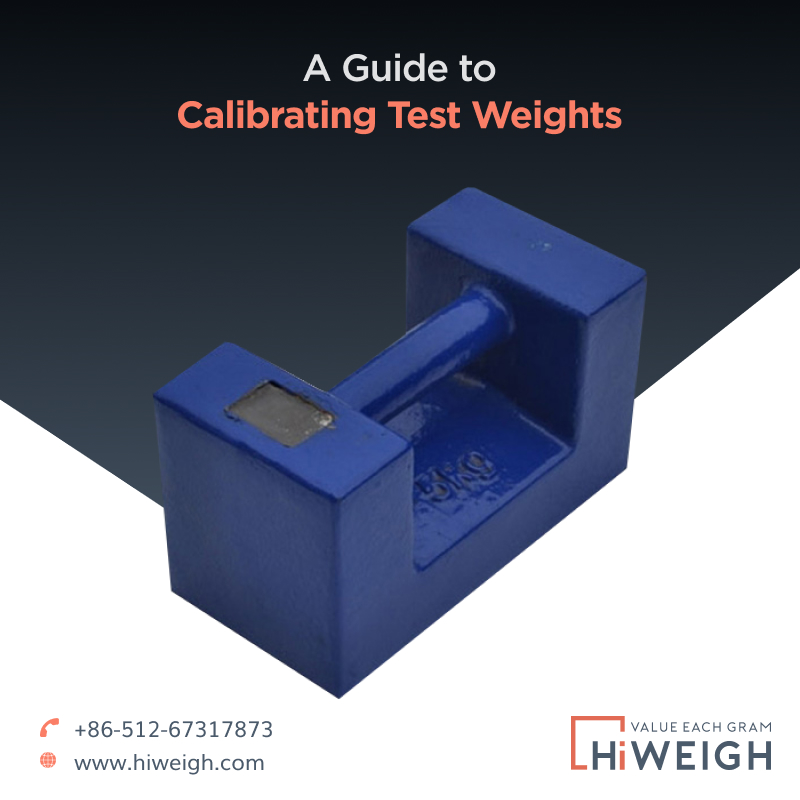Regularly calibrating your scales and balances is essential to make sure that your weighing equipment is providing correct measurements. Whether you have a system that needs to check your scales routinely or you have an internal calibration program, you will find yourself wondering about the kind of test weights to buy.
When it comes to choosing calibration weights for testing, several factors should be considered before making a buying decision. In that case, the following guidelines can help you find the best test weights for weighing instruments.



Things to consider when choosing test weights
Finding the right test weights is not easy if you have no idea about the factors that influence the results. Read on to find out more about the things to consider when buying calibration test weights.
Scale class
The primary thing to consider when buying test weights is you need to identify the class of the balance of scale that will be tested. It is a crucial step because the scale class needs to be listed on every scale serial plate that has been manufactured after 1988.
Various types of scales come under different classifications. For instance, Class I scales or balances are utilised in precision laboratory weighing applications. Class II is utilised for weighing precious gems and metals. And, Class III is used for most commercial weighing with a capacity of 30,000 lbs or less.
Weight class
Test weights are categorised based on their tolerance level. The three categorisation systems are NIST, ASTM, and OIML. It is important to select the right class of weights based on the tolerance required for a particular weighing application.
The NISTM Class F weights are considered field standards. It ensures that the compliance standards are being met and used for the calibration of trade scales.
The AISTM test weights vary from Class 000 to 7. Classes 000-4 are regarded as a high class because they are highly accurate. It is advised to wear gloves when handling these weights since a slight oil or body hair can affect their tolerance. ASTM Class 5 to 7 are equivalent to NIST Class F weights.
OIML test weights are classified into E1, E2, F1, F2, M1, M2, and M3. In the classification, E1 is considered the most accurate and M3 the least. Make sure to refer to tolerance charts when buying calibration weights based on tolerance levels.
Material
When it comes to material, cast iron is utilised for ASTM Class 6 and 7, NIST Class F, and OIML Classes M1 and M2. According to handbook 44, cast iron weights are used for only weights of 20 lbs or 10 kg and are weightier. These cast iron weights are painted gold when they are in metric units and painted skiver if they are avoirdupois units.
On the other hand, 10 lbs or 5kg weights and heavier could be stainless steel, steel, and iron. For smaller weights of .01 lbs/ 5g or 10 lbs/ 5kg, the material of the weights is 300 stainless steel or Rockwell B80.
Higher class weights such as OIML E!, E2, and F1 or ASTM 000-4, are usually polished metal, such as stainless steel.
Shape
Like there are extensive options for test weight material, they also come in various shapes. The popular shapes are:
- Grip Handle Weights
- Cylindrical Weights
- Leaf Weights
One can choose the weight shape based on their plan to use them.
Load configuration
To reduce the chances of mistakes and uncertainties, it is recommended to use as much less number of test weights as possible. In case, you are checking a test point that is 20lbs, the right thing to do would be to use a 20lbs weight than two 10lbs weights. Since the possibilities of mistakes are associated with every standard, using a minimum number of weights minimizes the chances of potential errors.
Measurement Units
Always make sure to buy test weights in the identical measurement units that you are weighing in. This removes the chances of errors in the weight conversions.
Conclusion
If you are buying calibration weights for testing your scales or weighing balances, make sure to consider the factors discussed above to make the right purchase. At the same time, look for weight materials that cannot be easily magnetized. Also, if you are planning to use a test weight for a conveyor-based weight checker, buy a custom standard for that particular usage.
